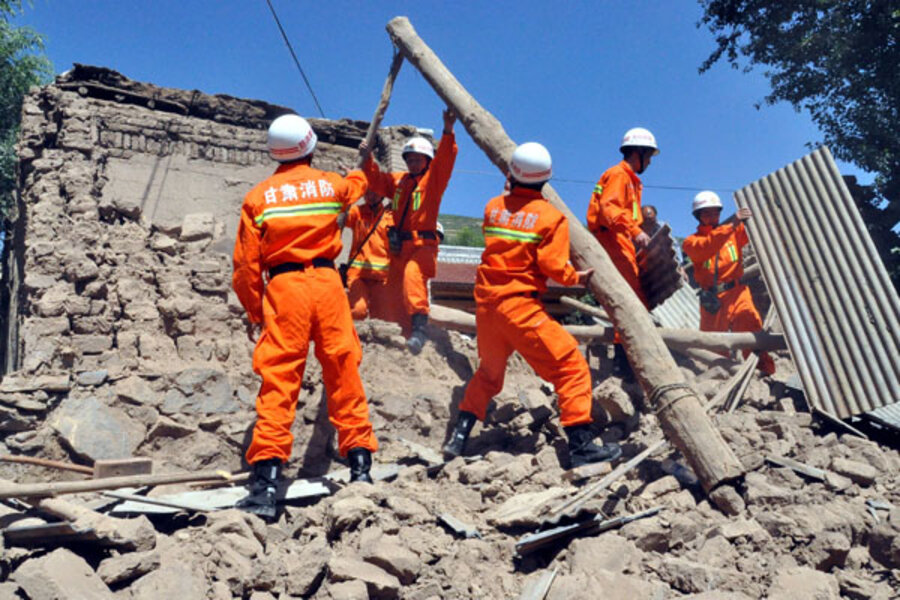Rescue efforts put to test as death toll rises in China earthquake
Loading...
| Beijing
China dispatched thousands of soldiers, police, militiamen, and firefighters Monday to dig for buried victims of an earthquake that killed more than 75 people and left more than 450 injured in northwest China, the official Xinhua news agency said.
An earthquake measuring 6.6 on the Richter scale hit a mainly rural area of Gansu Province at 7:45 local time; a major temblor and hundreds of smaller aftershocks rocked the region all day, local officials said.
The quake and subsequent flooding and mudslides seriously damaged eight towns in the remote and mountainous area. The topography of the affected region means it is sparsely populated but also difficult for rescuers to reach.
The authorities followed emergency disaster plans tested in earlier quakes, which are common in China, sending men from different units of the armed forces to help local civilians search for survivors.
They were also expected to use disaster relief techniques introduced after a massive quake hit the southwestern province of Sichuan, next door to Gansu, in May 2008, killing more than 87,000 people.
Since then, China has suffered 24 other earthquakes measuring more than 6.0 on the Richter scale, in which around 3,000 people have died.
Government agencies appeared better coordinated in April, when a quake hit Ya’an in Sichuan, killing nearly 200 people and injuring more than 11,000, than they had been during previous emergencies. Helicopters were sent quickly to the scene, as they were Monday, tent villages sprung up after a day or so, and relief workers were soon able to recharge displaced victims’ mobile phones, allowing them to get in touch with relatives.
How well a Chinese government deals with natural disasters has been regarded a test of its legitimacy since the imperial era.
After the recent Ya’an quake, the Global Times, a tabloid owned by the ruling Communist Party, boasted that “China’s disaster relief comes ahead of the United States, Japan, and other developed countries … in its ability to mobilize people and in other indicators.”
Monday’s quake struck along a particularly vulnerable fault line that has suffered 25 major earthquakes in the past, according to the China Earthquake Administration.
Photographs of the stricken area, posted on social media websites, showed simple houses, often built from mud bricks, in ruins. An initial investigation found that 1,200 houses had collapsed and another 21,000 were severely damaged, Gansu provincial government spokesman Chang Zhengguo told reporters.








